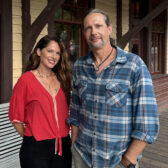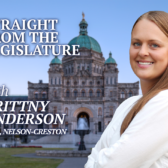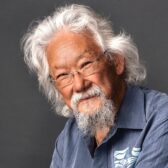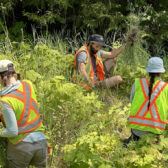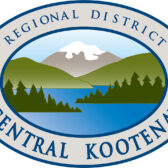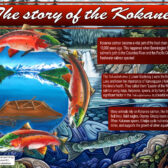Unemployment drops in region, below province, nation: StatsCan
The Kootenay unemployment rate dropped last month and now sits below the provincial and the national rates, according to recent figures released by Statistics Canada.
In August Statistics Canada reported that the Kootenay region recorded a five per cent unemployment rate, below the national rate of 5.5 per cent and the provincial mark of 5.2 per cent.
However, the rate was higher than the 2022 rate during August — a mark that stood at four per cent — with 79,300 people working in the region and 4,200 were looking for work. In July the unemployment rate was 5.5 per cent.
The national rate last month was 5.5 per cent — unchanged from July following increases in May, June, and July — with a rise in employment across Canada by 40,000.
The percentage for known unemployed people in the Kootenay region — which includes West and East Kootenay, as well as Nelson, Castlegar, Trail and Grand Forks — was 5.5 per cent in July, according to Statistics Canada latest figures, down from 5.7 per cent in June.
Employment increased among men and women ages 25 to 54 and declined among women 55 and older. More people had jobs in professional, scientific and technical services and construction while declines were registered in educational services and manufacturing.
Year-over-year, average hourly wages rose 4.9 per cent in August, gaining $1.56 to $33.47.
That rate is the third highest in the province, behind the Cariboo (eight per cent) and North Coast and Nechako (6.1 per cent). Vancouver Island and the Coast was the lowest at 4.4 per cent.
The new figures eclipse the 3.9 per cent from one year ago, with 82,300 people working and 5,000 looking for work out of a population of 142,000 — it rises well above the rate of 3.3 per cent from one year ago.
In job sectors, employment rose nationally in wholesale and retail trade, manufacturing, health care and social assistance and transportation and warehousing but went down in construction, educational services and agriculture.
Across the province
B.C.’s economy as a whole is holding steady with a decrease in part-time jobs in August and an increase in full-time jobs
“Statistics Canada’s Labour Force Survey (LFS) reported that B.C.’s economy is holding steady with the growth of 12,000 jobs in August. So far this year, B.C. has added 25,600 jobs.
“The monthly unemployment rate for B.C. is 5.2 per cent, which is the second-lowest in the country and below the national average.
“In August, jobs in education increased, which is good news for families with children in public schools and child care. B.C. saw a boost in transportation and warehousing jobs, too, a positive sign for people and businesses following the July port strikes,” said Brenda Bailey, minister of Jobs, Economic Development and Innovation, in a press release.
B.C.’s unemployment rate is at 5.2 per cent, which is second-lowest among all provinces, but above the historic low in winter.
“This means businesses are seeing more applicants for their vacant positions,” said Bailey.
B.C.’s average hourly wage of $34.21 is third-highest in the country, and year-over-year growth of seven per cent leads all large provinces.
“While the national inflation rate dropped to 3.4 per cent, we continue to make sure more people receive more money to help with bills and other day-to-day expenses through changes to the Climate Action Tax Credit,” said Bailey.
She said the Province continues to deploy thousands of personnel to suppress wildfires and support communities, and issued a provincial state of emergency.
She felt August’s increase in public-sector employment likely reflected increased firefighter and emergency response personnel.
“We understand the stress and economic challenges faced by many people, communities and businesses, as B.C. experiences a record wildfire season, slower global economic growth and high interest rates. The Bank of Canada held its interest rate at five per cent as there is growing evidence that higher interest rates are weighing on economic activity,” she said.
Employment has continued to grow by 1.5 per cent this year in B.C.
According to WorkBC
- Only a small proportion of B.C.’s population lives in the Kootenay region;
- The Kootenays have the highest median age of all the economic regions;
- Unemployment in the region has consistently been higher than in the provincial unemployment rate;
- Around a tenth of all Kootenay employment was in the other primary sector (forestry; mining, oil and gas; fishing, hunting and trapping) in 2019; and
- the Kootenay region has a high number of jobs in goods-producing sector industries, the second highest proportion of any of the regions.
Source: WorkBC







